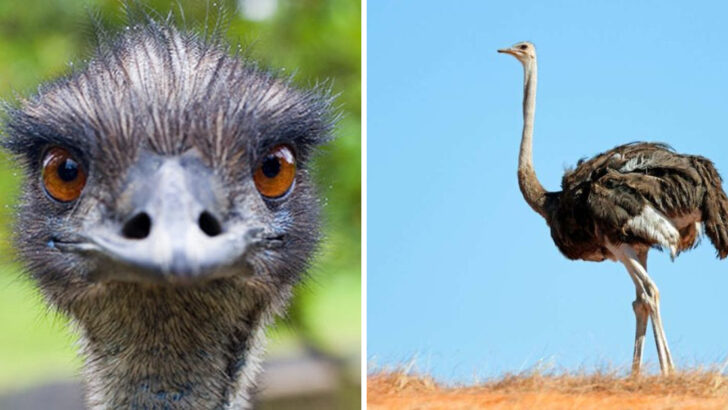Emus and ostriches, two of the most fascinating flightless birds, are often confused with one another.
Despite their similar appearances, they boast a variety of unique characteristics and behaviors that set them apart.
Understanding these differences can not only enhance your knowledge but also deepen your appreciation for these majestic creatures.
In this blog post, we’ll explore 15 distinct differences between emus and ostriches, covering aspects such as physical features, habitat, behavior, diet, and more.
Delve into the world of these extraordinary birds and discover what makes each of them truly special.
Size and Height
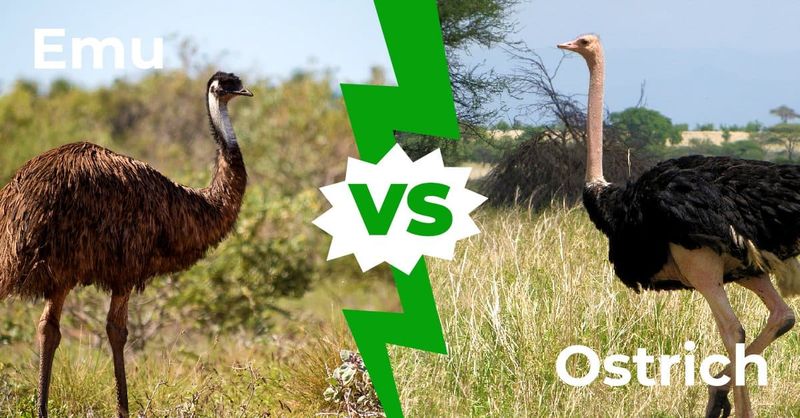
The towering stature of an ostrich is unmistakable, reaching up to 9 feet in height. In contrast, emus are notably shorter, standing around 6 feet tall. This size difference is a key distinguishing feature for anyone observing these birds in the wild.
The ostrich’s impressive height aids in spotting predators from afar, while the emu’s more modest stature suits its native Australian bushland. This variation in size also influences their respective abilities in terms of speed and agility.
Despite their differences, both birds exhibit remarkable adaptations to their environments.
Speed and Agility
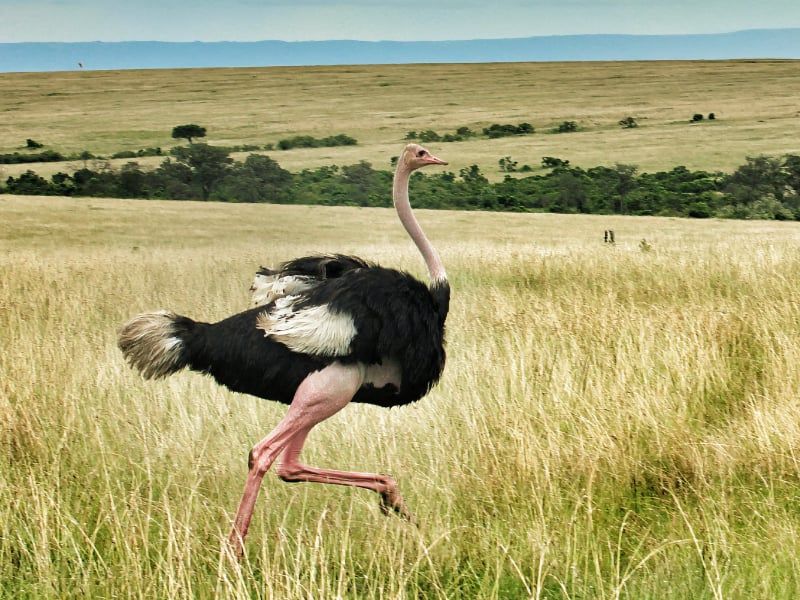
Ostriches are renowned for their incredible speed, capable of reaching up to 45 miles per hour. Emus, while fast, top out at around 30 miles per hour. This difference in speed is largely due to their physical build.
Ostriches use their powerful legs to cover vast distances quickly, making them a force to be reckoned with on the open plains. Emus, on the other hand, navigate the dense Australian flora with agility, using their strong legs for maneuverability rather than outright speed.
Both birds showcase unique adaptations suited to their habitats.
Native Habitat
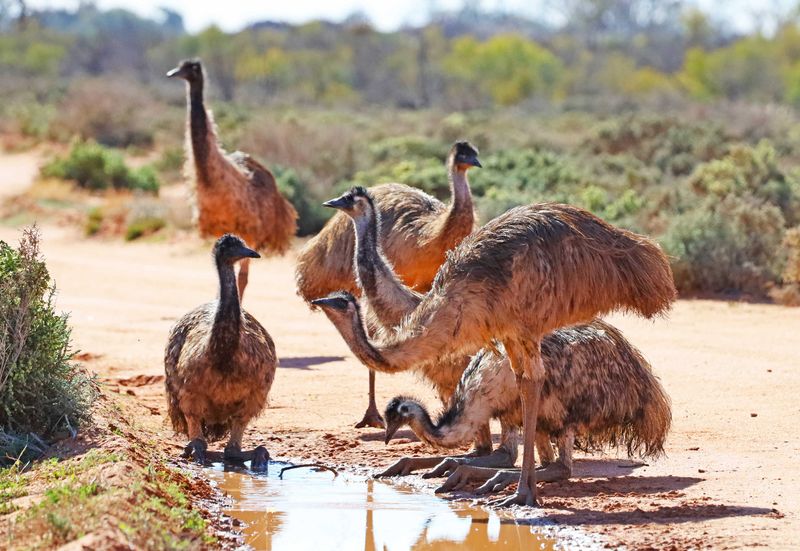
Originating from distinct continents, ostriches inhabit the sprawling savannahs and deserts of Africa. Emus, however, are native to the diverse landscapes of Australia, from coastal regions to arid interiors.
This geographical separation has led to distinct evolutionary paths. Ostriches thrive in open environments where they can use speed to escape predators. Emus, meanwhile, are accustomed to the varied Australian terrain, traversing woodlands and open plains alike.
This divergence in habitat has influenced not only their physical differences but also their behavioral traits.
Feather Texture
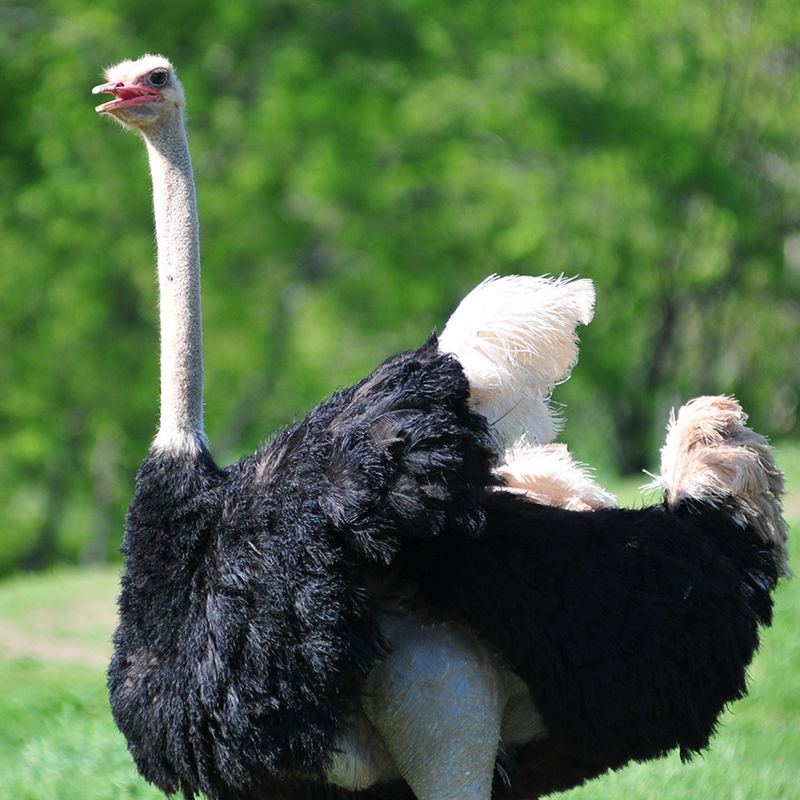
The texture of their feathers marks another striking difference. Ostrich feathers are soft and fluffy, resembling luxurious plumes. Emus, in contrast, have coarser and thicker feathers that provide insulation.
This difference in texture is due to their habitats and the climates they endure. Ostriches require ventilation in the hot African sun, while emus need insulation against Australia’s varying temperatures.
These plumage differences offer insights into how each species has adapted to its environment, showcasing nature’s ingenuity in tailoring creatures to their surroundings.
Dietary Preferences

Ostriches and emus have evolved to consume diets that suit their environments. Ostriches, living in arid African regions, primarily feed on plants, seeds, and small animals, adapting to scarce resources.
Emus, on the other hand, enjoy a more varied diet, including fruits, flowers, and insects, thanks to Australia’s diverse flora. This dietary divergence is a result of their different habitats and available food sources.
Both birds exhibit remarkable adaptability, managing to thrive in environments that pose significant challenges to survival.
Reproductive Behavior
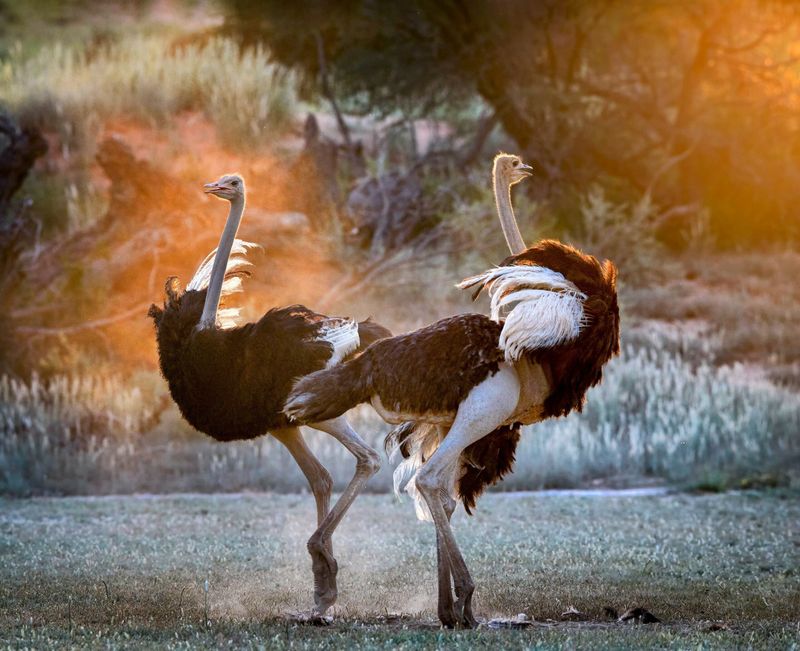
In the world of reproduction, ostriches and emus follow different strategies. Ostriches lay their eggs in communal nests, often with multiple females contributing.
This social nesting behavior is a fascinating aspect of their reproductive strategy. Emus, conversely, lay fewer eggs, with the male often taking on the role of incubating and caring for the young.
This difference highlights divergent evolutionary paths, with ostriches relying on numbers for survival, while emus focus on invested parental care. Each approach reflects unique adaptations to their environments and social structures.
Vocalizations
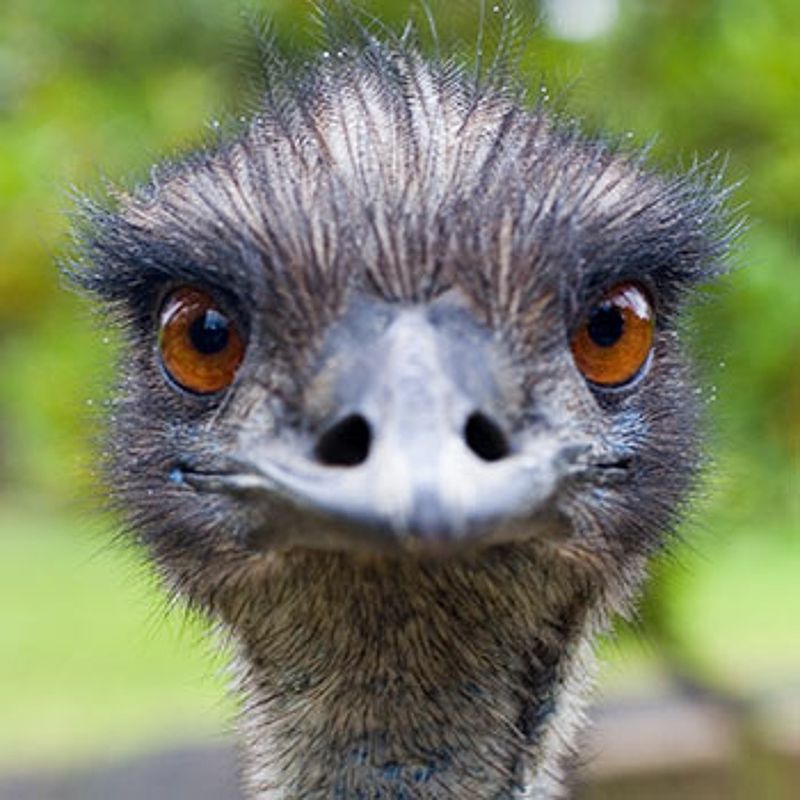
Communication among these birds is as varied as their habitats. Ostriches produce a deep, booming sound, often used to intimidate rivals or attract mates.
Emus, however, communicate through a drumming noise created by inflating a special neck sac. These vocal differences are not just fascinating but serve crucial roles in their respective social interactions.
Each bird’s unique sound is tailored to its environment, helping them communicate effectively despite the challenges posed by vast territories and potential predators.
Social Structure
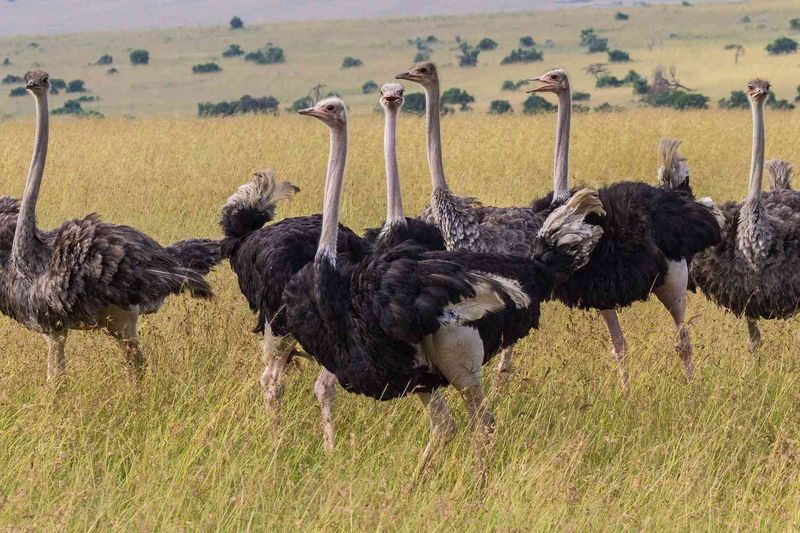
Social behavior in ostriches and emus differs significantly. Ostriches are social animals, often forming groups called herds, which provide protection and enhanced survival chances.
These groups roam the African savannahs, cooperating in feeding and protection. Emus, however, are generally solitary creatures, coming together only during mating seasons.
This solitary nature reflects their adaptation to the scattered resources of Australian landscapes. The contrast in social structures between these birds showcases their distinct survival strategies, shaped by their environments and evolutionary histories.
Lifespan
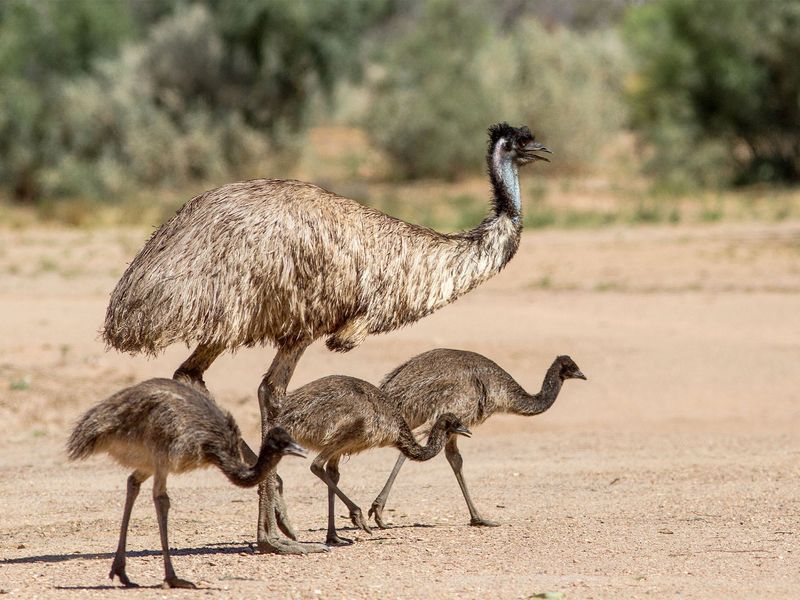
In terms of lifespan, ostriches and emus display intriguing differences. Ostriches can live up to 40 years in the wild, longer than their emu counterparts, which typically live around 10 to 20 years.
This disparity is influenced by factors such as predation, habitat stability, and reproductive strategies. Longer-lived ostriches benefit from stable environments and effective defense mechanisms.
Emus, with their shorter lifespan, must adapt to fluctuating Australian conditions. Their respective lifespans highlight the balance between longevity and the challenges posed by their differing environments.
Feet Structure
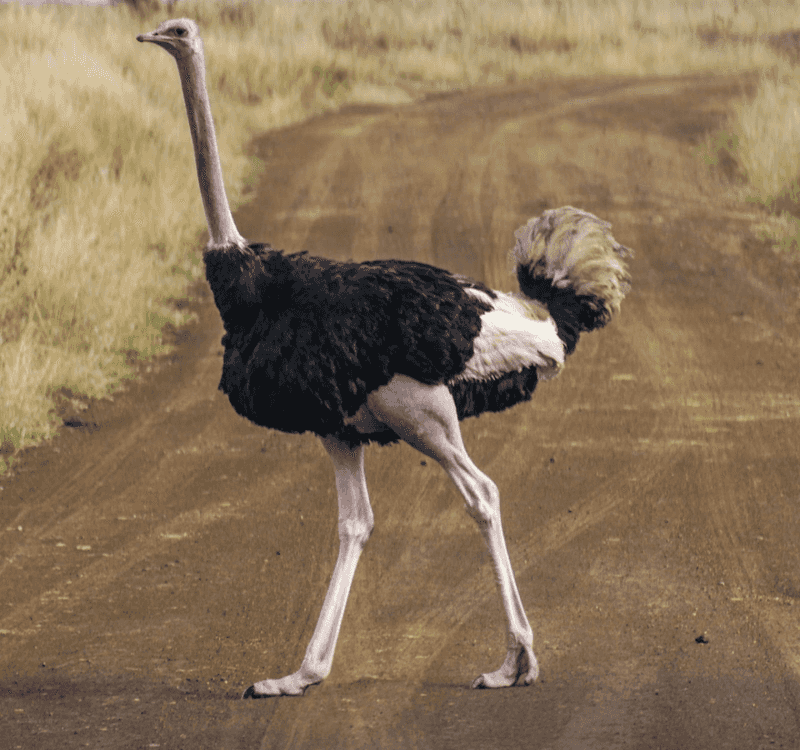
The structure of their feet provides insight into their evolutionary paths. Ostriches possess two-toed feet, a unique adaptation for speed and endurance on open African plains.
Emus, however, have three toes, aiding in maneuverability and balance in dense Australian vegetation. This structural difference in their feet highlights how each species has adapted to its specific environment, optimizing for speed or agility.
The divergent foot anatomy reflects the broader evolutionary strategies of these remarkable birds, showcasing the delicate interplay between form and function.
Egg Appearance
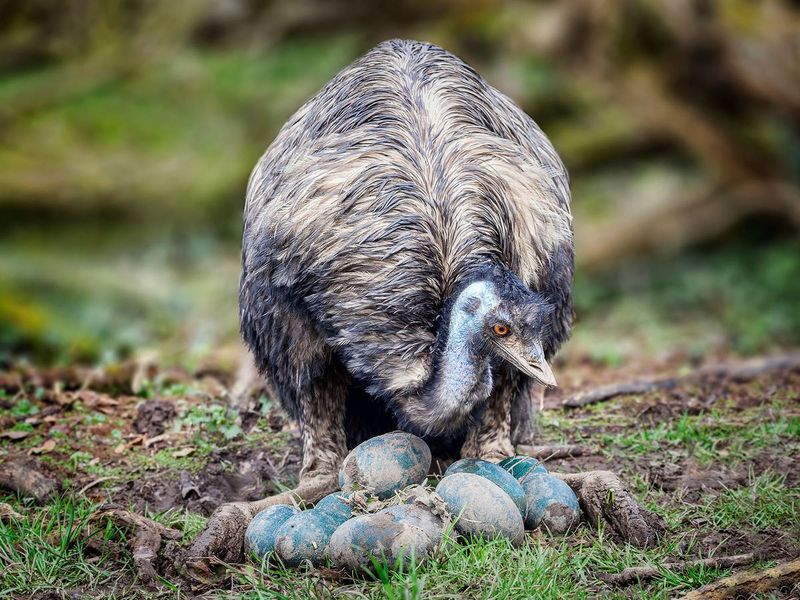
Eggs offer another fascinating comparison. Ostrich eggs are among the largest of any living bird, weighing around 3 pounds with a smooth, glossy surface.
Emu eggs are smaller, with a dark green color and a rough texture. These differences in appearance are not just aesthetic but reflect adaptations to different environments.
The size and durability of ostrich eggs suit the harsh African climate, while the emu’s darker eggs are camouflaged against the Australian bush. These egg characteristics reflect the evolutionary pressures faced by each species.
Courtship Rituals
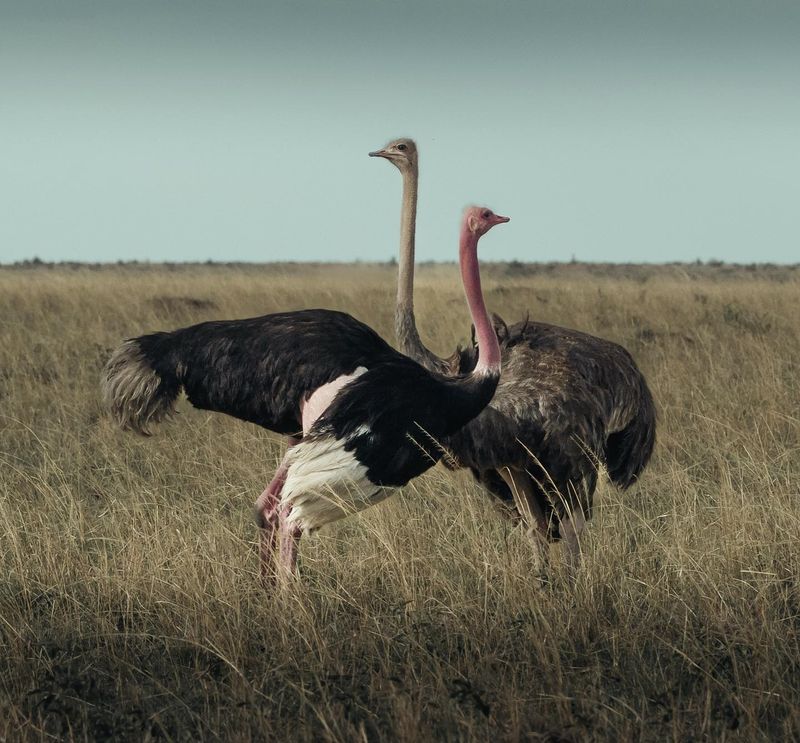
Courtship among these birds is a display of nature’s creativity. Ostriches engage in elaborate dance rituals, spreading their wings and performing intricate movements to attract mates.
Emus, in contrast, use head bobbing and vocalizations as part of their courtship display. These rituals are deeply ingrained in their behaviors, reflecting the diverse evolutionary paths they have taken.
The contrast in courtship styles highlights the unique cultural adaptations of each species, emphasizing the role of visual and auditory signals in their respective mating strategies.
Physical Strength
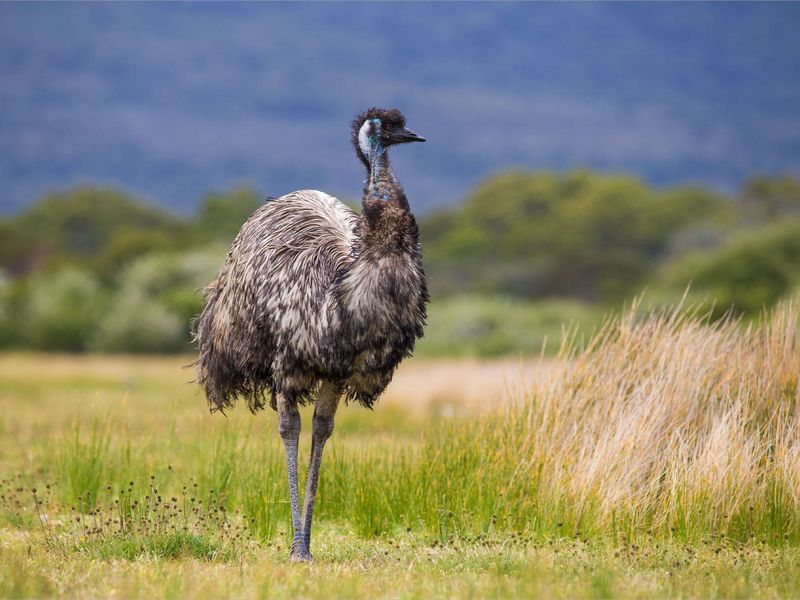
Strength manifests differently in ostriches and emus. Ostriches are known for their powerful legs, capable of delivering deadly kicks to predators. This physical prowess is a key survival trait in the predator-rich African plains.
Emus, while not as powerful in kicking, use their beaks effectively for defense and foraging. Their strength is more about resilience and adaptability, crucial for surviving in varied Australian habitats.
The differing physical strengths of these birds underscore their unique evolutionary adaptations to their environments and survival needs.
Climate Adaptation
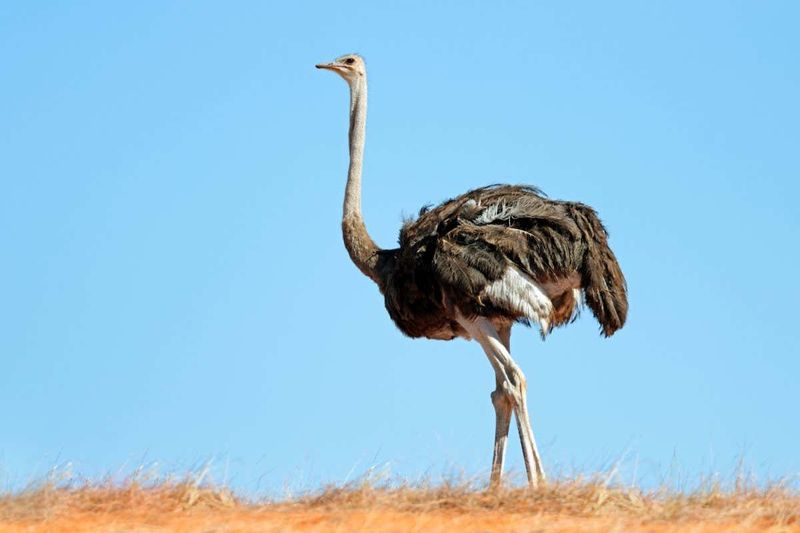
Adaptation to climate is another difference. Ostriches are well-suited to the extreme heat of African deserts, with features like long legs and a large body that help dissipate heat.
Emus, meanwhile, are adapted to a range of Australian climates, from tropical to temperate, showcasing their versatility. These adaptations include dense feathering for warmth and the ability to conserve water.
The contrasts in climate adaptation highlight the remarkable ways in which these birds have evolved to thrive in their respective environments, showcasing nature’s ingenuity.
Cultural Significance

Both birds hold cultural significance in their native regions. In Africa, ostriches are often depicted in ancient art and folklore, symbolizing speed and survival.
In Australia, emus are a central figure in Aboriginal mythology, representing creation and the land’s spirit. These cultural connections offer insight into how humans have coexisted with these birds for centuries, reflecting the deep bond between people and nature.
The divergent cultural roles of ostriches and emus underscore the influence these birds have had on human societies, enriching our shared history.

